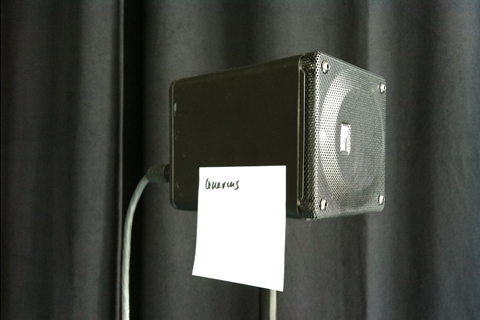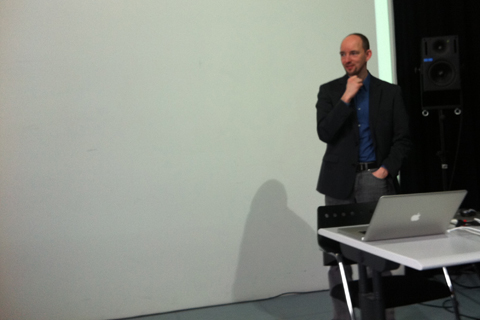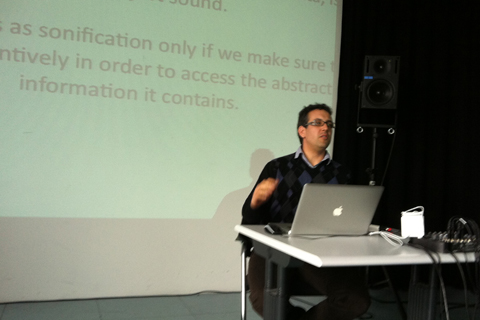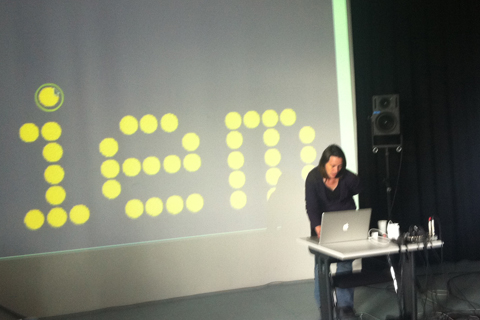A first sonification of ecophysiological data from the measurements in Salgesch by Roman Zweifel and Fabienne Zeugin is ready for listening – a good time to invite some experts to assess our experiments and give an overview of their current sonification projects, research and methods.
In the symposium on The Sound of Data, we looked at the latest research in data sonification. The speakers presented their sonification projects and discussed prospects, opportunities and limitations in the representation of data using sound, based on the latest developments in science, technology and the arts. Of particular interest to us were the strengths and weaknesses in the conversion between analogue, symbolic and artistic representation of data. The application of sonification methods in scientific and artistic projects and the different needs of those fields were discussed. We asked whether it makes sense to define sonification as a branch of art-driven research — one in which aesthetic cognitive models are developed across various scientific and artistic disciplines — or whether, in so doing, we are merely defining means and methods as science or art.
Speakers, among other participants, were:
Thomas Hermann, head of the Ambient Intelligence group at the CITEC, Bielefeld University. He defined sonification as an extension of our listening skills to the non-audible domain. Sound does reflect objective relations in data; sonification as a scientific method for exploring and discovering correlations is equal to visualisation. Hermann gave an overview of research in sonification, methods, tools, applications, and looked at the borders of the research field, where sonification connects to neighboring domains and disciplines such as media arts, sonic interaction design, aesthetics and functional sounds. For illustration, he demonstrated several current sonification projects and connected sonification to research in ambient intelligence and cognitive interaction technology. Finally, Thomas Hermann tried to forecast the future of sonification in a society where digital devices are pervasive and sonic interaction with them becomes a part of our daily routines. www.sonification.de
Florian Grond, artist, member of the Ambient Intelligence group at the CITEC, Bielefeld University), spoke about aesthetic strategies in sonification. Sound can be listened to in various ways and with different intentions. Multiple factors influence how and what we perceive when listening to sound. Sonification, the acoustic representation of data, is in essence just sound. It functions as sonification only if we make sure to listen attentively in order to access the abstract information it contains. This is difficult to accomplish since sound always calls the listener’s attention to concrete – whether natural or musical – points of references. Important aspects determining how we listen to sonification have been discussed: elicited sounds, repeated sounds, conceptual sounds, technologically mediated sounds, melodic sounds, familiar sounds, multimodal sounds, and vocal sounds. We discussed how these aspects help the listener engage with the sound, but also how they can become points of reference in and of themselves. The various sonic qualities employed in sonification can potentially open but also risk closing doors to the accessibility and perceptibility of the sonified data.
Sound is time based and has certain similarities with the stream of our thoughts – the disadvantage of sonification is that the experience of knowledge associated with sound is a transient one. Florian Grond’s homepage
Katharina Vogt from the Institute of Electronic Music and Acoustics (IEM) and the Institute of Physics in Graz talked about sonification at the IEM, specially about her projects in the context of physiotherapy and physical theory. The growing amounts of data in society and science ask for new approaches in data analysis and display. The rapid development of computers and algorithms has led to new quantitative and qualitative insights, but the typically multi-dimensional data sets are very large, and only a few simple observables are considered. Methods of sonification in theoretical physics have been implemented in the interdisciplinary presurcor project SonEnvir at the Institute for Electronic Music und Acoustics (IEM). QCD-audio works on data of computer physics, stemming from the Institute for Physics. QCD-audio




